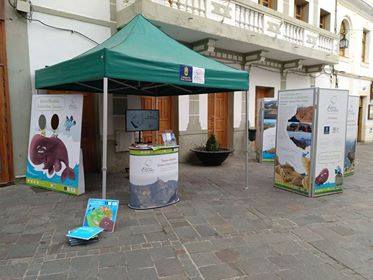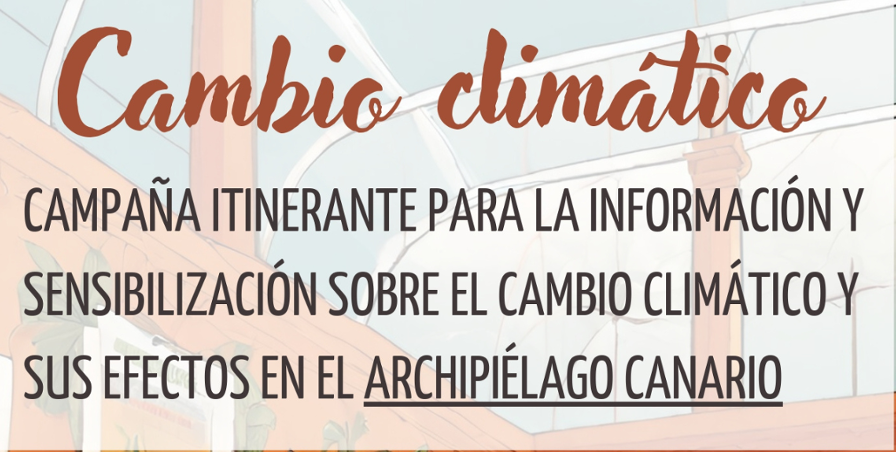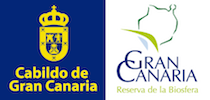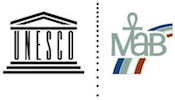Representative Bodies
The UNESCO guidelines for the implementation of the Biosphere Reserves, reflected in its Madrid Action Plan (February 2008), are clear and can be summarized in three points:
The implementation of a Biosphere Reserve in a territory:
- Must be carried out after a participative process
- Must be managed through committees made up of the affected social groups.
- Must imply an Action Plan designed and approved.
The Cabildo of Gran Canaria, through its Service for the Environment, is the authority in charge of the conservation and management of the island's natural resources and protected natural areas and forests, alongside with the waste management.
The responsibility attached to such competence led to suggest to UNESCO that it should be Cabildo of Gran Canaria the promoter and coordinator of the Biosphere Reserve of Gran Canaria as long as the management was carried out jointly with the rest of the public offices involved (municipalities, Government of the Canary Islands, social groups, etc). Such work would be developed in accordance with the respective administrative competences and existing legal framework, aligned with the aforementioned guidelines through:
• 2013-2020 Action Plan approved by the Representative Bodies.
• Representative Bodies, organized in three Councils:
- Governing Council: Managing body through its Executive Committee.
- Citizens'participation Council: Body in charge of facilitating the integration and participation of all the public offices and prívate sectors within the Gran Canaria territory of the Biosphere Reserve.
- Scientific Council: Appointed with the task of the permanent monitoring and assessing of the actions and initiatives planned and the backing of these actions by means of scientific criteria on conservation and sustainable development.
Besides the three formal bodies described above, there are other specific Committees and Task Forces made out by individuals and social groups for the carrying out of each project, turning into reality the awaited participation of the whole civil society.
Download the Gran Canaria Biosphere Reserve Statutes and Bodies
Download Scientific Council criteria
Download Citizens' participation Council criteria
Asset Publisher
What Are These?
A Biosphere Reserve is an area comprising singular characteristics and formed by terrestrial, marine, coastal or mixed ecosystems, where solutions to reconcile biodiversity conservation and sustainable use of resources are promoted. These areas, internationally recognized by the UNESCO Man and the Biosphere Programme MAB constitute "support sites for science and sustainability".
Where Are These?
The 631 World Biosphere Reserves Are Spread Over 120 Countries Comprising A Total Area Of Over 700 Million Hectares (2015).
These Are Distributed As Follows:
67 Biosphere Reserves In 28 Countries In Africa
136 Biosphere Reserves In 24 Countries In Asia And The Pacific
29 Biosphere Reserves In 11 Countries In The Middle East
297 Biosphere Reserves In 36 Countries In Europe And The United States
122 Biosphere Reserves In 21 Countries In Latin America And The Caribbean
Download The World Biosphere Reserves Map
What Are These For?
The Main Goals To Accomplish By The Biosphere Reserves Are To Promote And Boost The Harmonic Integration Of Human And Nature To Achieve Sustainable Development For Each Of These. In These Areas, Specially Designated In Order To Test Multidisciplinary Approaches, Tasks Are Carried Out Through Participative Dialogue, Research, Knowledge Exchange, Poverty Diminishing, Wellbeing Improvement, Respect For Cultural Values And Social Ability To Adapt To Environmental And World Changes.
How Do These Work?
Activities
The Activities To Be Conducted By The Biosphere Reserves Can Be Summarized In Three: Conservation, Development And Logistics. The First One Will Try To Preserve And Improve The Natural Values Attached To It; The Second One Is Based On Reaching The Socio-Economic Development Of Local Populations Present In The Territory; The Logistic Activity Is Intended For The Research, Education And Experience Exchange Between The Human Being And The Environment.
Work Procedure
From The Starting Point Of Working In A Cooperative Way Under A Wide Alliance As The Only Means To Obtain Sustainable Results In The Long Term, The World Network Of Biosphere Reserves, Alongside With International Bodies, Governments, Local Public Offices, Universities, Ngos And Corporations Worldwide, Works Supported By Other Several International Networks, National, Regional, Municipal And Sectorial.
Besides This General Framework Described, Each Biosphere Reserve Develops An Action Plan Which, Designed For Specific Periods, Sets Out The Tasks To Be Carried Out. Such Plan Must Be Approved By All Members Of The Respective Councils.
Territorial Structure
Each Biosphere Reserve Is Made Out Of Three Interrelated Areas With Connected Roles, Complementary And Mutually Reinforcing:
• The Core Zone, Where The Most Remarkable Natural Values Concentrate, Being The Conservation Function The Reigning One.
• The Cushion Zone, Surrounding The Core, Or Adjoined To It, Where Activities Compatible With Successful Ecologic Practices That Can Contribute To The Research, Follow-Up, Training And Scientific Education.
• The Transition Zone, Where A Wider Range Of Activities Are Promoted In Order To Contribute To A Sustainable Human And Economic Development From The Social, Cultural And Ecologic Point Of View.
Who Do These Depend On?
The Inclusion Of A Specific Area In The World Network Of Biosphere Reserves Occurs When A Decision Is Made By The International Coordinating Council Of The Mab Programme (Man And Biosphere) According To The Candidacies And Proposals Conveyed By The Governments, Whereas The Jurisdiction Over The Area Designated As Biosphere Reserve Lies Entirely On The Country Where It Is Located.
The Intergovernmental Structure Of Unesco Through The Mab Programme Provides The Governments With The Framework For The Planning And Carrying-Out Of Research Programmes And Training, Supplying Technical Assistance And Scientific Advice.
The Signing Countries Constitute Mab National Committess Which Guarantee The Widest Participation Of Countries In The International Programme, Defining And Carrying Out Its Activities In The Mab International Coordination Council, Main Governing Body For Mab, Which Sets Out The Agenda Of The Programme.
Concurrently, And To Attain The Effective Synergies In Order To Share Knowledge And Work Experiences, Networks Clustering Biosphere Reserves Under Geographic Criteria (Regional And Sub-Regional Networks) Or By Ecosystems And/Or Shared Features Are Constituted.

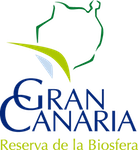

![english [beta] english [beta]](/o/biosferagc-theme/images/language/en_GB.png)
